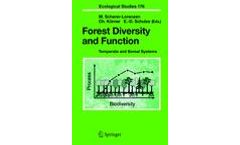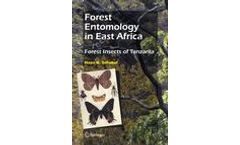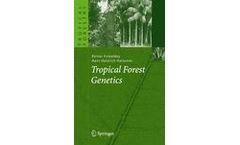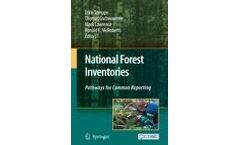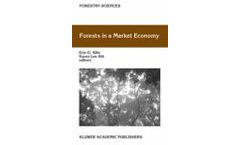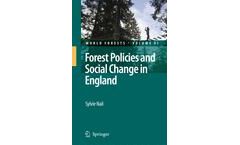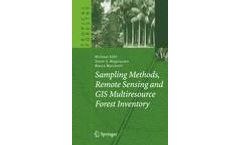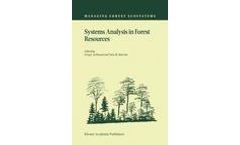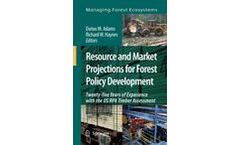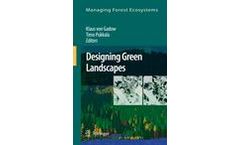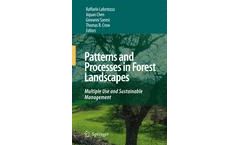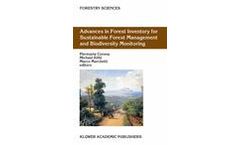forest-resources-for-recyclable-forest books
22 books found
The forests of the earth are not only the source of a wealth of products such as timber, pulp, and charcoal, but are also of great importance in the absorption of carbon dioxide. Therefore, it takes little consideration to understand the dangers of overexploitation caused by economic development and population growth. With an eye on forest conservation and increasing carbon dioxide fixation, ...
This book is a collection of papers presented at the international symposium on forest sector analysis held in Miyazaki, Japan, in 1998. It is structured with three themes: understanding global forest sector issues, discussing the contribution of modeling efforts to forest sector analysis, and discussing the role of Japanese forest policy in a global sense. The most important features are ...
Boreal forests form Earth's largest terrestrial biome. They are rich in ecosystem and landscape diversity, though characterized by relatively few plant species, as compared to other forested regions. The long term viability and sustainability of boreal forests is influenced by many factors. They are subject to interruptions at intervals by large-scale natural disturbances, and increasingly ...
This volume comprises eighteen papers dealing with the theory and application of modern decision-making and management planning of multiple use of forestry and other natural resources in the landscape. Generally, an economic approach is used as implemented by operations research methods, but broader contexts are applied too, e.g. ecosystem management, discounting, preference analysis and ...
One of the central research themes in ecology is evaluating the extent to which biological richness is necessary to sustain the Earth's system and the functioning of individual ecosystems. In this volume, for the first time, the relationship between biodiversity and ecosystem processes in forests is thoroughly explored. The text examines the multiple effects of tree diversity on productivity and ...
East African forests, among the world’s most biologically rich and diverse, are subject to multiple pressures, including insects. As the first work to focus exclusively on East African forest insects, this monograph distils 135 years of scientific and historical literature extending from before the colonial era to the present into an authoritative survey of this region’s major pests of trees and ...
The economics of sustainability is much more complex than the neoclassical (Newtonian) economic approach to economic efficiency. Forest resources provide the ideal starting point for the economic analysis of sustainability. This book provides a systematic critique of neoclassical economic approaches and their limitations with respect to sustainability. Leading economists from different streams of ...
Tropical forests harbour much of the planet’s genetic resources, and therefore their conservation and sustainable utilization are matters of global concern. Evolutionary processes in both untouched and managed forests are described, as is the role of genetics in plantation forestry and conservation. This book provides a solid scientific basis for researchers, practitioners and students interested ...
Traditionally the purpose of National Forest Inventories (NFIs) has been to provide continuously updated information regarding the state of a given nation’s forest resources, including their timber volumes, species composition and sustainable development. But with increased international reporting requirements – to the FAO, the ITTO, the UN’s Framework Convention on Climate Change, the ...
This book provides a state-of-the-art review of both classical and emerging themes in forest resource economics. The authors show how neo-classical economic principles can be used to analyze forest policy issues across existing and developing market economies in the United States, Latin America, and South and Southeast Asia. The chapters encompass traditional and modern areas of concern in forest ...
Forestry has been witness to some dramatic changes in recent years, with several Western countries now moving away from the traditional model of regarding forests merely as sources of wood. Rather these countries are increasingly recognizing their forests as multi-purpose resources with roles which go far beyond simple economics. In this innovative book, Sylvie Nail uses England as a case study ...
The book presents the state-of-the-art of forest resources assessments and monitoring and provides links to practical applications of forest and natural resource assessment programs. It gives an overview of current forest inventory systems and discusses forest mensuration, sampling techniques, remote sensing applications, geographic and forest information systems, and multi-resource forest ...
Systems analysis in forestry has continued to advance in sophistication and diversity of application over the last few decades. The papers in this volume were presented at the eighth symposium in the foremost conference series worldwide in this subject area. Techniques presented include optimization and simulation modelling, decision support systems, alternative planning techniques, and spatial ...
Long-range models that include product and resource detail are essential to meaningful analysis of both industry and resource sustainability. Taking this as its central argument, this book provides essential reading to anyone interested in projecting the future of either the forest products market and/or the forest resource conditions. It is aimed at policy makers, model builders, researchers and ...
Agroforestry research is central to developing methods for the sustainable use of natural renewable resources, evolving to address the needs of the coming century. It is now necessary to consolidate the scientific gains now being made in process-oriented research and to develop a policy framework to encourage the adoption of sustainable land use practices. Agroforestry plays an important ...
Von Gadow and Pukkala’s unique Designing Green Landscapes presents the latest thinking in adaptive management for forest ecosystems. Based on the ‘multiple path’ principle, this approach links species choice and silvicultural methods with changing demands and changing environmental conditions, to ensure continuous adaptation, often several times within the lifetime of a tree. The ‘multiple path’ ...
Increasing evidence suggests that the composition and spatial configuration – the pattern – of forest landscapes affect many ecological processes, including the movement and persistence of particular species, the susceptibility and spread of disturbances such as fires or pest outbreaks, and the redistribution of matter and nutrients. Understanding these issues is key to the successful management ...
The increasing awareness and concern of people, researchers and decision makers for the maintenance and enhancement of goods and services provided by forest ecosystems significantly widened the scope of information needs for sustainable forest management on the task-specific, integrative and strategic level. Forest resource assessments have to provide reliable, harmonized, politically relevant, ...
With its 250-year history, Sustainable Forest Management (SFM) is now viewed as a model for managing forests worldwide. Yet despite the frequent use of the term there remain many questions concerning its meanings, criteria as well as its practical application. This book explores the current potential of SFM within the context of the rapid changes occurring in our natural and social environment, ...


